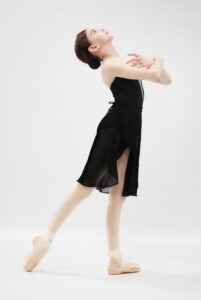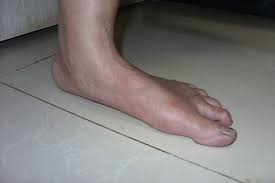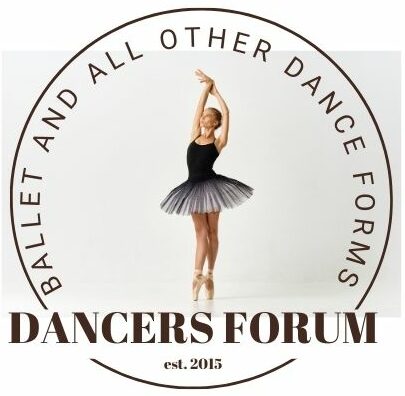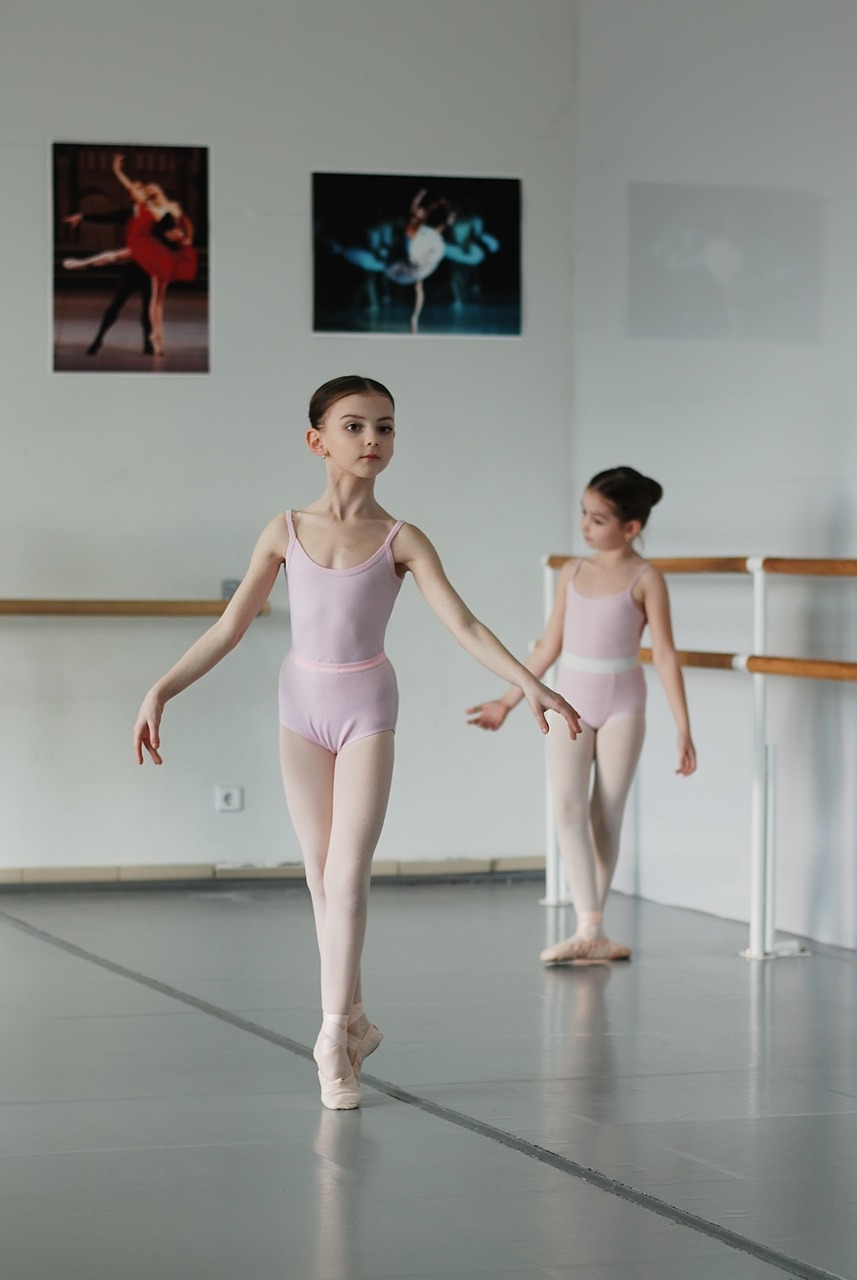The Teaching of Classical Ballet: Common Ballet Mistakes in Young Dancers and Their Training
This post contains affiliate links, which means that the owner of this website may get commissions on qualifying purchases.
Here are some common ballet mistakes that dancers need to try and avoid at all costs. Repeating the same mistakes over time can lead to stress and injury to the body.
Ballet Mistakes
Here is a list of the most common ones that we see in the dance class.
Pinching the Shoulder Blades Together
Sometimes to open up the chest, the dancer opens too wide and the shoulder blades pinch together at the back making a deep line between the shoulder blades. If this happens, the dancer won’t have freedom in her arms and she won’t have any support in the upper spine. This also causes the trapezius and the rhomboid muscles in the back to strain.
In this case, the dancer needs to think about widening her shoulders out to the side. It may help to fill the lungs with air and make space in the chest. Think about keeping the hands soft, because if the shoulders are pulled back too much, the hands will feel restricted.

Hyperextended Legs
Some dancers have very hyperextended legs. These are legs that almost look as though they are bending backward when the knees are stretched. It sometimes becomes a habit to give in to the hyperextension by letting the knees overstretch and the feet part too much when standing in a closed position.
Although the hyperextended leg can look very attractive in dance, especially in the arabesque lines, the dancer needs to take care not to overstretch the leg, as they normally tend to have weak external rotator muscles. The legs will want to collapse in on themselves when landing from jumps, thus causing the body weight to fall over the knees. If hyperextension is not worked with carefully, the joints that maintain the alignment of the legs can be damaged and the dancer could end up with twisted knees or sprained ankles.
The dancer has to train not to give in to her hyperextension, and this means she must think of lengthening her legs rather than straightening them. The knee must never lock backward, and the dancer almost feels like she is dancing on bent legs. The dancer will have to take particular care when training her turnout and keep it activated at all times from the hips.
When the dancer stands in first she must focus on having her feet together and relaxing the quadriceps. If the quads are contracted, the kneecaps are pulled back too much.
Curling the Toes
Curling or clenching the toes is a very common fault. The dancer will either curl her toes while standing flat-footed or when she points. Clenching the toes while standing makes the feet a very unstable platform on which to stand, and this creates problems for the rest of the body, by placing unwanted stress on the joints of the legs. Clenching the toes will also prevent the articulation of the feet, which is so necessary for ballet.
If the dancer has a problem with clenching, make her sit on a chair with the feet on the ground. Drag the feet towards the body and slowly raise to demi-pointe as you do this, working on a forced arch and keeping the toes flat on the floor.
I have also heard that weaving a strip of cloth over the second toe, alternating it below and above the successive toes, and leaving it there during barre work and other non-dance activities will help the dancer to start feeling those toes. I have yet to try this method for fixing this ballet mistake.
Rolling the Feet In
 Sometimes dancers try to get their feet to turn out more than the hips allow for, and this causes the arches of the feet to roll inwards. Turnout is always from the hips and is not about forcing your feet open. This ballet mistake places a whole lot of stress on the tendons of the feet and knees. It will lead to injuries as the rest of the body will overcompensate for the imbalance when your knees can’t line up over the toes.
Sometimes dancers try to get their feet to turn out more than the hips allow for, and this causes the arches of the feet to roll inwards. Turnout is always from the hips and is not about forcing your feet open. This ballet mistake places a whole lot of stress on the tendons of the feet and knees. It will lead to injuries as the rest of the body will overcompensate for the imbalance when your knees can’t line up over the toes.
The dancer needs to think of turnout as an activity, not a position. Dancers need to concentrate on standing on the heel, the ball of the big toe, and the ball of the little toe. These three points must remain in contact with the floor at all times when the foot is flat on the floor.
Sickling The Feet
This is one of the most common ballet mistakes, and when it is not corrected early on, it becomes very difficult to correct. You can read more about sickled feet by clicking here.
Over-Arching of the Spine
This is one of the most common ballet mistakes. The tummy muscles are not supporting the spine, which causes the lower back to overarch and the tailbone to stick out at the back. The pelvis must neither tip back nor tuck under, otherwise, the range of motion in the hips will be limited.
The dancer should think of having her tailbone down and her navel lifted upwards. Think of the four T’s – no tucking, tilting, twisting, or tipping of the hips.
Not Working Correctly Through The Plié
Since pliés are the most basic step in the ballet vocabulary, it can be easy to go through them without paying attention to what you’re doing. Plié should be done smoothly with no jerks and particular attention must be put on knees opening out over the toes on the bends. Attention must be paid to using all the counts of music and coordinating the arms and the legs.
When hitting the bottom of a full plié make sure not to sit on your heels or bounce back up with no control. Also, make sure that the heels do not lift more than they need to.
You want to slowly bend your knees and not snap up, but rather squeeze the legs together working the inner thighs.
Jumps or Sautes
Nothing grates on a teacher’s nerves more (except for unpointed feet and not putting the heels on the floor on landings) than locked knees when landing from a jump. This is really bad for your joints and you need to bend your knees and land through your feet to cushion your joints and muscles from impact and prepare you for the next step (usually another jump). So protect your knees and improve your technique by always landing with a demi plié.
For a dancer to fix her ballet mistakes and habits, she needs to stay mindful and focused throughout her class. When trying to fix a problem, the dancer will really need to focus on that mistake for a while, but as the muscle memory kicks in, it won’t be so much hard thinking anymore, as the body will take over.


Well you learn new things everyday! Never knew that ballet was so technical and had so many small factors that go into it… really interesting!
I did tap dancing as I grew up and really enjoyed it! I find ballet so wonderful to watch… graceful 🙂
Thanks for the post!
Mason
Thanks for stopping by and leaving your thoughts Mason.
Such an interesting article on ballet, I never realized those little things made such a difference in ballet before reading your article.
Great suggestions, things most of us would never consider. I do not have any daughters, so i never experienced ballet but this has been a eye opening article for me.
Yes these ballet mistakes seem simply, but they are really important. Thanks for your comment.